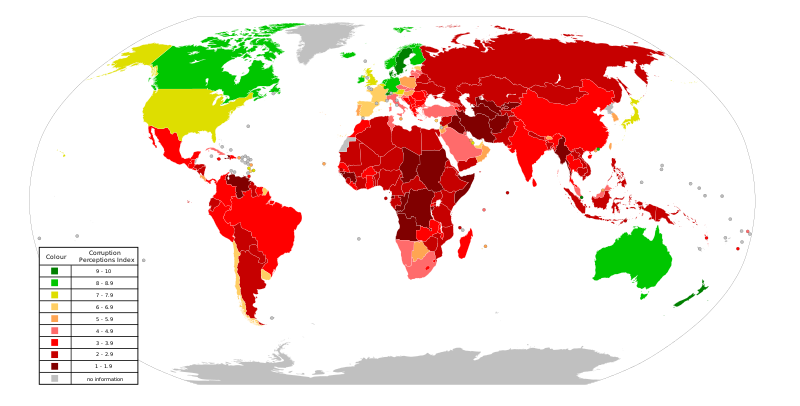The Geopolitics of Morality : Religion vs. Peace
The natural philosophy of life is not merely some social, cultural, or man-made construct. Rather, the values of honesty, generosity, equality, and freedom have a direct relation to how nature and the world operate. In this post I will provide evidence to show that the more these values are violated (either between individuals, or with nature – ie. devastation of life-sustaining resources) the greater conflict and destruction prevails. I will also demonstrate that the religious perception of the world is bankrupt. Religiosity does not lead to more peace or stability.
Thanks to the information revolution it is now easy to obtain data that was once accessible only to the few. But what sort of data would allow us to evaluate the prominence of the values of freedom, equality, honesty, or generosity and their relation to conflict? We may have more difficulty finding more local data, but on the global scale there are many independent organizations – such as Freedom House, Reporters Without Borders, and Gullap – that monitor and rank various indicators. These indicators include global political and social freedom, freedom of press, economic freedom, freedom of religion (conscious), corruption perception (honesty), generosity, gender equality, and many more.
To make any conclusions regarding the validity of the natural philosophy of life take a look at the data. Notice the countries that are ranked lowest in terms of civil liberties, freedom of press, economic freedom, generosity, and highest perception of corruption. Then compare these countries with the peace index and conflict areas. Finally, take a look at the religiosity index:
Green indicates: more free
Red indicates: less free
Press Freedom Ranking 2008 (Reporters Without Borders 2009 – Wiki)

Blue indicates: more free
Red indicates: less free

Blue indicates: more free
Red indicates: less free
Blue indicates: more free
Red indicates: less free
Red indicates: less free
Corruption Perception Index 2009 (Transparency International 2009 – Wiki)

Green indicates: more honest
Red indicates: more corrupt

Green indicates: more honest
Red indicates: more corrupt
Gender Gap Report 2012 (World Economic Forum)

Blue > Green > Yellow > Orange > Red indicates: most equal to least equal
Blue > Green > Yellow > Orange > Red indicates: most equal to least equal
Now let’s take a look at some of the conflict indicators:
List of Wars and Ongoing Conflicts (Wikipedia)

Dark indicates: 1000+ deaths per year
Light indicates: other conflicts

Dark indicates: 1000+ deaths per year
Light indicates: other conflicts
Global Peace Index 2008 (Institute for Economics and Peace – Wiki)

Green indicates: more peaceful
Black indicates: more conflict*
(it may be important to note that some nations that are mostly free – such as the United States, India, and Israel – are in conflict direct with nations that are least free. Never in history has one free nation fought another free nation).
Now let’s take a look at the religious perspective:

Green indicates: more peaceful
Black indicates: more conflict*
(it may be important to note that some nations that are mostly free – such as the United States, India, and Israel – are in conflict direct with nations that are least free. Never in history has one free nation fought another free nation).
Now let’s take a look at the religious perspective:
Importance of Religion 2006-08 (Gallup – Wiki)

Red indicates: most religious
Light pink indicates: least religious
Red indicates: most religious
Light pink indicates: least religious
“Heat Map” in the United States of religiosity and other indicators (IQ, poverty, murder rate, theft, divorce, (less) generosity, political affiliation, health & contentment)

Red indicates: higher rate
Green indicates: lower rate
As you can see, there seems to be a positive relation between the values of honesty, generosity, equality, and freedom with peace and stability. On the other hand, religiosity and peace are not positively correlated. In fact, one could argue that religion and peace are conflicting.



Nenhum comentário:
Postar um comentário
Observação: somente um membro deste blog pode postar um comentário.